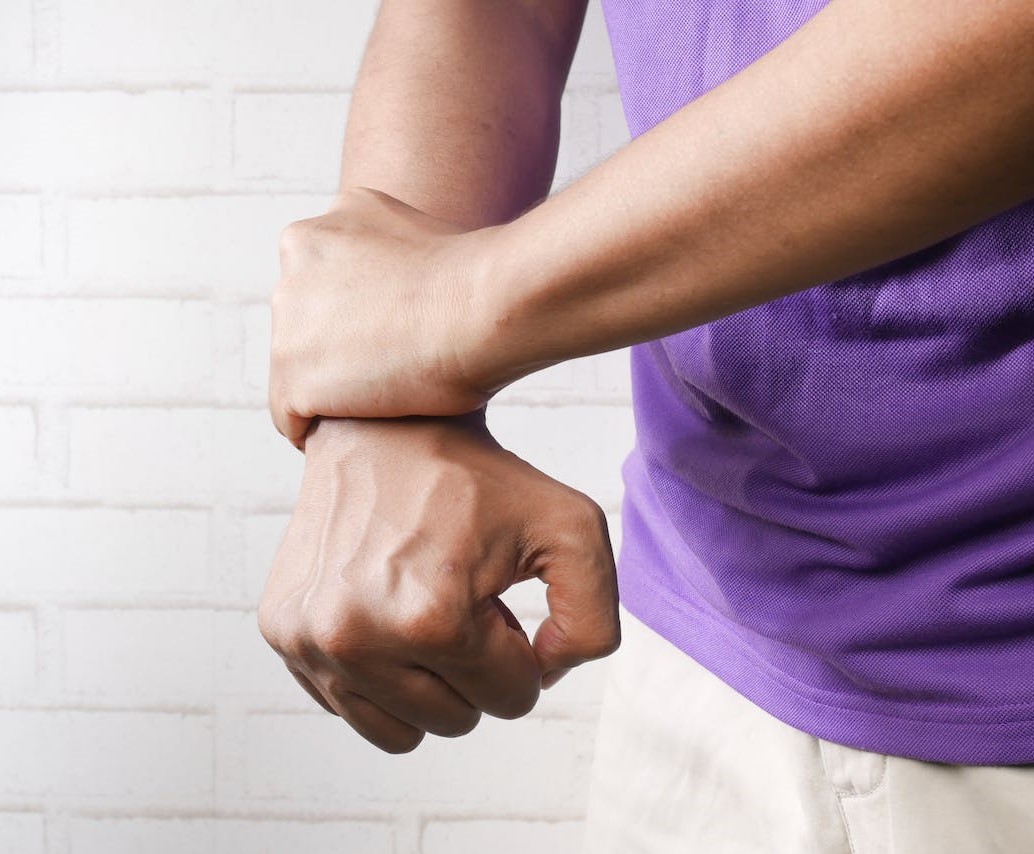Schedule An Appointment With Us
Are Your Symptoms Affecting Your Quality Of Life?
Consult our MOH-accredited orthopaedic surgeon for an accurate diagnosis & personalised treatment plan.
MBBS
MRCSEd
MMED (Ortho)
FRCSEd

Cubital tunnel syndrome, also known as ulnar nerve entrapment, is a condition characterised by the compression or irritation of the ulnar nerve in the arm. This nerve, one of the three primary nerves in the arm, is particularly susceptible to compression in the area behind the inner part of the elbow. It plays a role in providing sensation to the little finger and half of the ring finger, as well as controlling the small muscles in the hand that facilitate fine movements.
The ulnar nerve’s vulnerability to compression or irritation at the elbow can result in a range of symptoms including numbness, tingling, weakness, and pain in the hand and fingers.
Cubital tunnel syndrome arises from several factors that exert pressure on the ulnar nerve at the elbow.
Cubital tunnel syndrome manifests through a range of symptoms, primarily affecting the hand and elbow.

Diagnosing cubital tunnel syndrome involves a comprehensive approach that includes medical history, physical examination, and various diagnostic tests:
Non-surgical treatments are often the first line of approach for cubital tunnel syndrome. These methods focus on alleviating symptoms and preventing further nerve damage.
Activity Modification |
For less serious cases, the elbow specialist may initially suggest avoiding activities that aggravate the condition, such as repetitive elbow bending or resting the elbow on hard surfaces. |
Brace or Splint |
Using a brace or splint, especially at night, helps avoid excessive bending of the elbow, thereby reducing nerve compression. |
Physical or Occupational Therapy |
Therapy includes nerve gliding exercises designed to help the ulnar nerve slide more smoothly through the cubital tunnel. These exercises also aim to prevent stiffness in the arm and wrist, maintaining flexibility and function. |
Anti-inflammatory Medications |
These drugs, such as ibuprofen or naproxen, help reduce nerve inflammation and alleviate pain. |
In cases where non-surgical treatments for cubital tunnel syndrome are ineffective, or the nerve compression is severe, surgical intervention may be considered.
This surgery involves cutting and dividing the ligament that forms the roof of the cubital tunnel. This procedure enlarges the tunnel, thereby decreasing pressure on the ulnar nerve. New tissue growth is expected at the site of the ligament division, which aids in the healing process.
In this procedure, the elbow specialist relocates the ulnar nerve from behind the medial epicondyle to a position in front of it, closer to the skin. This relocation prevents the nerve from getting caught on the bone, reducing the likelihood of recurring compression.
This surgical option involves removing part of the medial epicondyle. The removal of this bony prominence relieves the nerve from entrapment, thus addressing the compression.
Schedule An Appointment With Us
Consult our MOH-accredited orthopaedic surgeon for an accurate diagnosis & personalised treatment plan.
Preventing cubital tunnel syndrome involves several practical measures to reduce the risk of nerve compression and irritation.

MBBS
MRCSEd
MMED (Ortho)
FRCSEd
With over 18 years of experience, Dr Poh Seng Yew is an orthopaedic surgeon specialising in hip, knee, shoulder and elbow surgery, sports medicine, and trauma surgery.




Weekdays: 9.00am – 5.00pm
Saturdays: 9.00am – 1.00pm
Sundays and Public Holidays: Closed
Please leave us a message, and we will be in touch with you shortly.
Cubital tunnel syndrome can affect either one or both arms. The condition may develop in each arm due to various individual factors like repetitive strain or anatomical variations. Consult with an elbow specialist for tailored management strategies specific to each arm.
Untreated cubital tunnel syndrome can lead to complications such as muscle weakness, decreased hand function, and chronic pain. Early consultation with an elbow specialist can help prevent these complications.
Nerve gliding exercises, designed to help the ulnar nerve move more freely, are often beneficial in the treatment of cubital tunnel syndrome. These exercises, along with other therapy recommendations, can be provided by an elbow specialist to ensure effective and safe practice.
Returning to sports after cubital tunnel syndrome depends on the severity of the condition and response to treatment. An elbow specialist can help you make any necessary modifications to sporting practices to accommodate your condition.